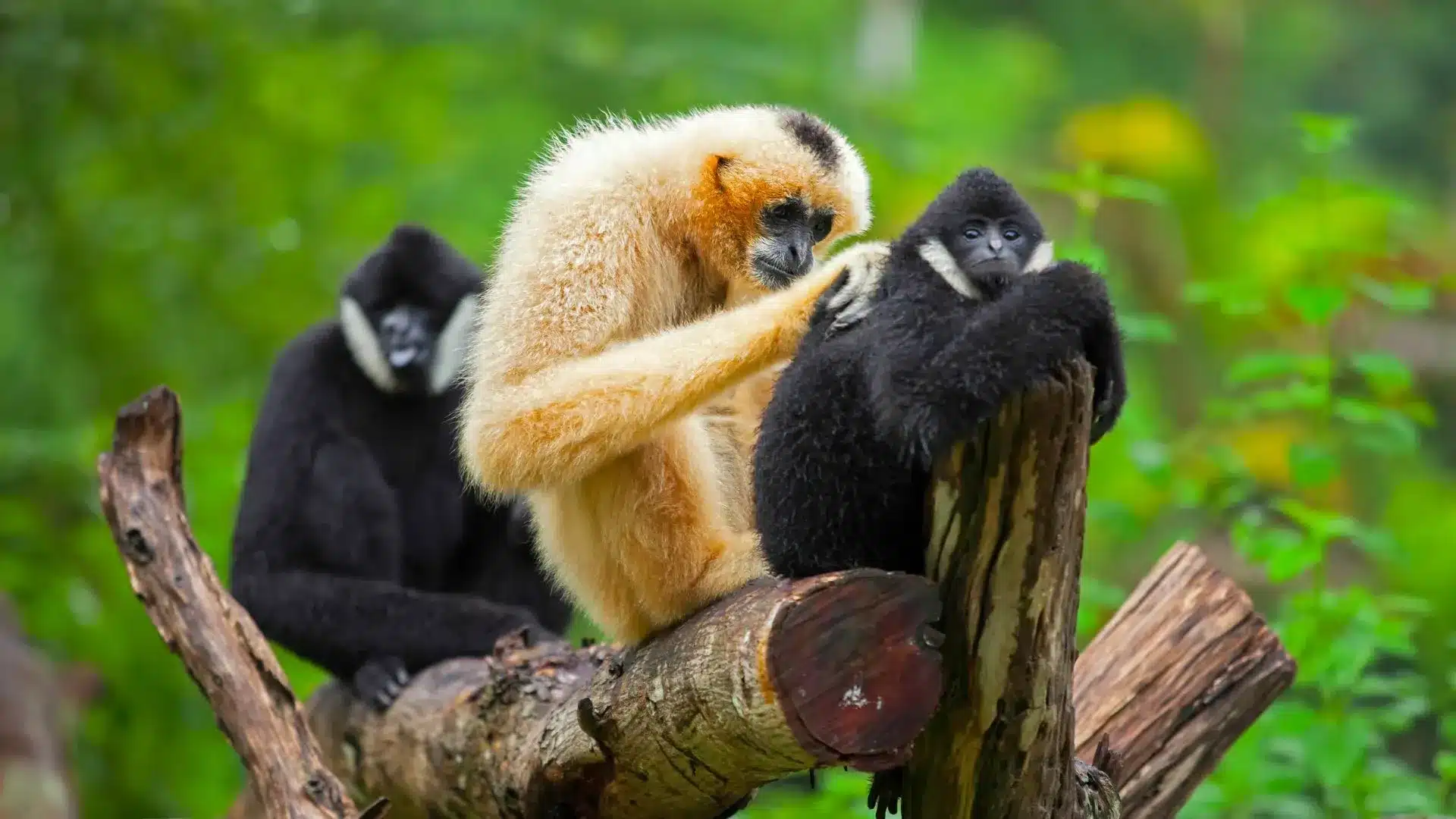About Hoolock Gibbon:
- Gibbons, the smallest and fastest of allapes, live in tropical and subtropical forests in the southeastern part of Asia.
- The hoolock gibbon is one of 20 species of gibbons on Earth.
- Distribution:
- Its distribution in Southeast Asia spans India, Myanmar, Bangladesh, and southern China.
- It is the only ape found in India.
- In India, it is found in Assam, Meghalaya, Arunachal Pradesh, Nagaland, Manipur, Mizoram, and Tripura, south of the Brahmaputra.
- Hollongapar Gibbon Sanctuary in Assam has the largest concentration of the hoolock gibbon.
- It is categorised into Eastern Hoolock Gibbon (Hoolock leuconedys) found in a specific region of Arunachal Pradesh and Western Hoolock Gibbon (Hoolock hoolock) distributed elsewhere in the northeast.
- Features:
- Both male and female gibbons are about the same size, but they differ considerably in colors.
- Males are black colored with remarkable white brows, while females have grey-brown fur, which is darker at the chest and neck.
- White rings around the eyes and around the mouth give their faces a mask-like appearance.
- They are diurnal and arboreal, brachiating through the trees with their long arms.
- They are monogamous (same partner throughout life).
- They live in small families, including males, females and their young ones, and communicate with other gibbons by vocalisation.
- The loud calls of the gibbon are used to identify individuals within and outside the family group.
- Like all apes, they are extremely intelligent, with distinct personalities and strong family bonds.
- Life span: 25 years
- Conservation Status:
- IUCN Red List:
- Eastern Hoolock Gibbon: Vulnerable
- Western Hoolock Gibbon: Endangered
- IUCN Red List:
Both are on Schedule I of theWildlife (Protection) Act of India, 1972.
Q1: What are apes?
Apes are humanity’s closest living relatives. In fact, people are apes; humans share about 98 percent of their DNA with chimpanzees. The non-human types of apes are divided into two groups: great apes — gorillas, bonobos, chimpanzees and orangutans — and lesser apes — gibbons and siamangs. Apes are not monkeys; they belong to different branches of the Simian infraorder, and there are several physical differences. Apes do not have tails, while most monkeys do, and apes are typically larger than monkeys. Apes’ noses are short and broad, while monkeys’ noses are more snout-like. Apes also have larger brains than monkeys, and they are capable of using tools and learning language.
Source: Railways to build canopy bridges across track in Assam gibbon habitat
Last updated on December, 2025
→ Check out the latest UPSC Syllabus 2026 here.
→ Join Vajiram & Ravi’s Interview Guidance Programme for expert help to crack your final UPSC stage.
→ UPSC Mains Result 2025 is now out.
→ UPSC Notification 2026 is scheduled to be released on January 14, 2026.
→ UPSC Calendar 2026 is released on 15th May, 2025.
→ The UPSC Vacancy 2025 were released 1129, out of which 979 were for UPSC CSE and remaining 150 are for UPSC IFoS.
→ UPSC Prelims 2026 will be conducted on 24th May, 2026 & UPSC Mains 2026 will be conducted on 21st August 2026.
→ The UPSC Selection Process is of 3 stages-Prelims, Mains and Interview.
→ UPSC Result 2024 is released with latest UPSC Marksheet 2024. Check Now!
→ UPSC Prelims Result 2025 is out now for the CSE held on 25 May 2025.
→ UPSC Toppers List 2024 is released now. Shakti Dubey is UPSC AIR 1 2024 Topper.
→ UPSC Prelims Question Paper 2025 and Unofficial Prelims Answer Key 2025 are available now.
→ UPSC Mains Question Paper 2025 is out for Essay, GS 1, 2, 3 & GS 4.
→ UPSC Mains Indian Language Question Paper 2025 is now out.
→ UPSC Mains Optional Question Paper 2025 is now out.
→ Also check Best IAS Coaching in Delhi

















